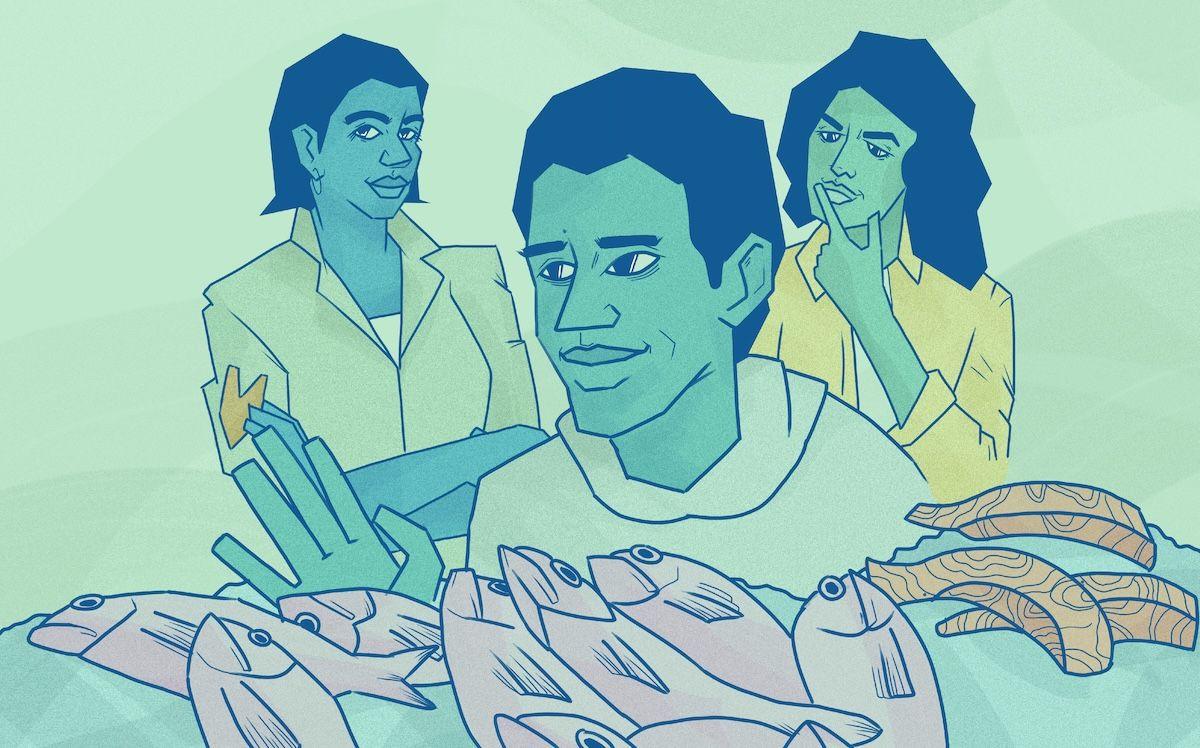A parakeet fish with holes in its head on the display caught Sebastián Aiello's attention as he walked down the aisles of Grupo Chedraui's Selecto supermarket in La Paz, Baja California Sur. They were signs of a harpoon, a fishing gun that is considered an illegal method of capture.
This was the fourth time in 2023 that I saw flake fish on the counter of frescoes that had to be extracted with a piola, hook or net depending on the species, but which, instead, showed these types of marks.
The case detected by Aiello, a technician from the Citizen Observer Network (ROC), was reported to the National Fisheries and Aquaculture Commission (Conapesca) to carry out an inspection of the supermarket facilities.
However, they were not attended to, said Alberto Guillén, executive director of said NETWORK and member of the Waterkeeper Alliance.
ROC made the case public through its social networks to raise awareness among those who consume these products in the supermarket and provide citizens with tools to identify illegal fishing.
“They sell fish extracted from the sea in a bad way, for sale to the public. So you as a consumer could rethink yourself, but I trust my dealer. How can it be that they give me fish extracted in a bad way or in a bad way? So there's the awareness. That is why these reports are made to make the user or consumer aware with an invitation so that they can be able, by their own methods, to distinguish what they are buying,” said Sebastián.
Supermarkets in physical stores are the most common place to buy fresh fish, according to the Consumer Perception Report (2022) of the Mexican Council for the Promotion of Fishery and Aquaculture Products (Comeesca) and the Collective Impact for Mexican Fisheries and Aquaculture (Icpmx) initiative.
However, unlike Aiello, many consumers are unaware if the product they are buying comes from an unsustainable or illegal source.
Good practices and buying motivations
“The best way to pay as a consumer is, precisely, to ask where the product comes from and having all the necessary information to ensure that it comes from a sustainable source,” said Aaron Rosado, director of Sustainable Marketing Hul Kin S.A. and vice president of the Yucatan octopus FIP, a project to improve the fishery.
However, although there are certified sustainable alternatives in supermarkets, “the big challenge is that the customer is willing to pay for a whole series of additional logos when buying the product they are looking for,” he added, referring to the certification logos.
According to the Comeesca and Collective Impact report, the conventional motivations that drive purchasing choices have to do with the health and freshness of the products, while other sustainable aspects are less valued.
Because of Mexico's general economy, one of the main motivators of buying fish products is price, according to Abraham Vergara, director of the School of Administrative Sciences at Motolinia University and business consultant.
“The most sustainable products, unfortunately, are more expensive, so the issue of price becomes again, and if we think about the economic situation of the country, where maybe a fish from a sustainable source costs 100 pesos and, if not, it costs 50, since in the country we don't have a large part of the population with the greatest wealth yet, (the consumer) it goes for 50 pesos, because in the end we have to meet the primary needs and one of them is to eat,” he told Causa Natura Media.
However, this difference in costs is due to unfair competition, according to Aarón Rosado, since sometimes sustainable fishing competes against the prices of illegal fishing.
“With the context we live in today, in which as long as illegality exists, it is derived from a process of existing demand for products without traceability, there will clearly continue to be unfair competition. I mention this because to promote the best practices of sustainability, the angler clearly needs premium prices to be able to say why I'm going to do more work for the same price or less. So if (as a company) you pay the fisherman more to ensure that all this is managed in the best way and the end customer is not willing to pay for that differentiating price, he is clearly also encouraging illegality,” he explained.
It is estimated that illegal, unreported and unregulated fishing exceeds 40% of the total catch in Mexico.
Encourage sustainable consumption
74% of those surveyed for the Compesca and Collective Impact report said that supermarkets should remove all unsustainable fish and seafood products from their shelves.
This is due, according to Vergara, to the fact that new generations are increasingly aware of the impact of the products they buy, but he believes that “there is still a long way to go to transform that consumption so that it is intelligent and at the same time sustainable”.
Although for there to be sustainable consumption, it is necessary to exercise the right to information, after that, a commitment must be encouraged on the part of the consumer to choose the most sustainable options and thus have a more responsible consumption, said Alejandro Calvillo, director of the organization El Poder de Consumidor.
“The right to know that I can choose more sustainable products and services is a right, but there is also a commitment that consumers should have when they have that information,” he said.
*This note is part of series #PescadoenelSupermercado, which reports on the standards of fisheries sustainability in the Mexican market.



Comentarios (0)